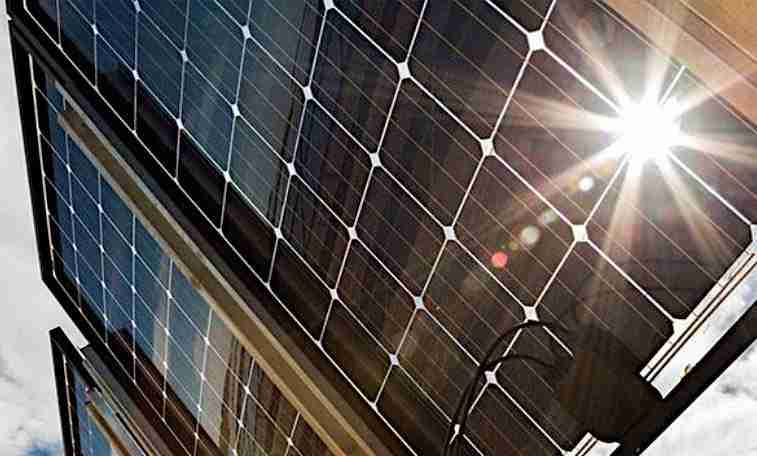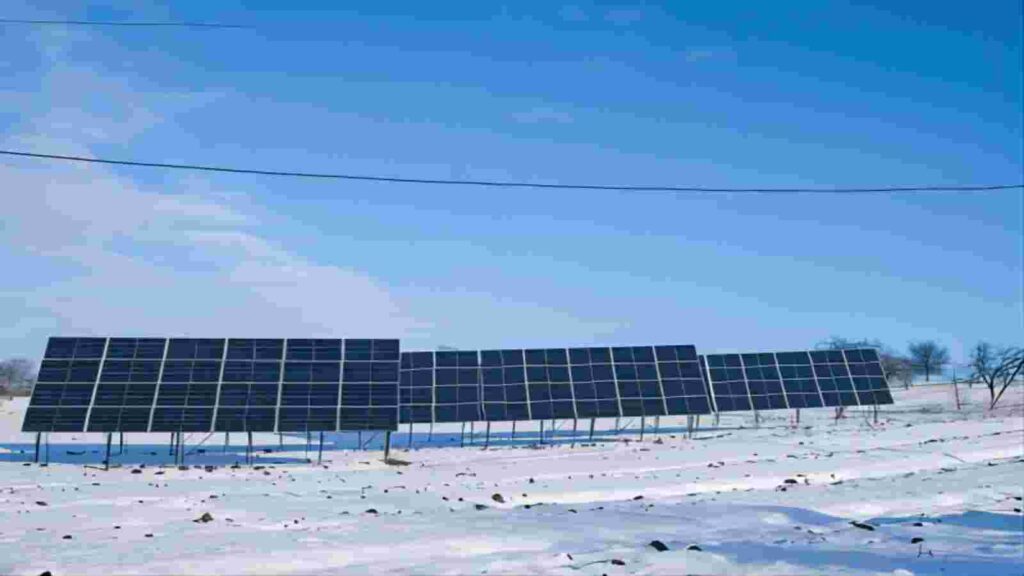5 Reasons Why Bifacial Solar Panels Are More Efficient
Bifacial solar panels achieve 10–30% higher efficiency than monofacial panels by capturing sunlight on both sides, utilizing reflected light (albedo effect). Their dual-glass design increases durability (25+ year lifespan) and reduces degradation. Ideal for high-reflectivity surfaces (snow, sand) or elevated installations, they yield 5–20% more energy annually. Optimal tilt angles (15–35°) maximize rear-side gain.
More Light, More Power
Solar panels have one job: turn sunlight into electricity. But not all sunlight is equal—some gets wasted. Traditional solar panels only use the light hitting their front side, losing up to 20% of potential energy that bounces off the ground or nearby surfaces. Bifacial solar panels fix this by capturing light on both sides, boosting total output by 5-30% depending on installation conditions.
A 2023 study by the National Renewable Energy Lab (NREL) found that bifacial panels in a ground-mounted system with reflective surfaces (like white gravel or concrete) delivered 10-15% higher annual energy yield compared to monofacial panels. In snowy regions, where sunlight reflects off the ground, gains can hit 20% or more. Even on rooftops with light-colored surfaces, bifacial modules add 3-8% extra power—enough to cover an extra 100-300 kWh per year for a typical home system.
"Bifacial panels don’t just 'work better'—they squeeze more energy from the same sunlight. If your system costs 15,000,a101,500 in value without adding more panels."
The secret is in the design. Bifacial panels use transparent backsheets or dual glass layers, allowing rear-side light absorption. Their efficiency doesn’t just depend on direct sunlight—diffuse light (like on cloudy days) and reflected light also contribute. In a side-by-side test by PV Magazine, bifacial panels in a commercial solar farm produced 7.2% more energy per day than traditional panels, even with partial shading.
Installation matters. Ground-mounted systems see the biggest gains (15-30%) because of higher albedo (reflectivity). Rooftop installations with light-colored surfaces or tilt racks can still add 5-10%. Even in less ideal conditions—like dark roofs—bifacial panels outperform monofacial ones by 2-5% just from ambient light.
Costs have dropped, too. Five years ago, bifacial panels were 20-30% more expensive, but today, the premium is just 5-10%. For a 10 kW system, that’s an extra 500−1,000 upfront, but the additional energy pays it back in 3-5 years. After that, it’s pure profit—especially with 25-30-year lifespans (vs. 20-25 for standard panels).

Works in Low Light
Most solar panels struggle when the sun isn’t shining bright—but bifacial panels keep producing power even in cloudy, dawn, or dusk conditions. Traditional monofacial modules lose 15-25% efficiency on overcast days, while bifacial designs drop only 5-12% thanks to their ability to capture diffuse and reflected light. In real-world tests, bifacial systems in Germany—a country with 1,600 annual sunlight hours (vs. 2,500 in California)—still achieved 92% of their rated output on cloudy days, compared to 78% for monofacial panels.
Dual-sided absorption. Even when direct sunlight is weak, bifacial panels harvest ambient light bouncing off clouds, snow, or light-colored surfaces. A 2024 study by Fraunhofer ISE found that in low-light conditions (200-400 W/m² irradiance), bifacial panels generated 8-14% more power than monofacial equivalents. For a 6 kW residential system, that’s an extra 20-40 kWh per month—enough to power a fridge for 10-15 extra days.
Performance Comparison: Bifacial vs. Monofacial in Low Light
Condition | Bifacial Output (% of rated power) | Monofacial Output (% of rated power) | Efficiency Gain |
Heavy clouds (150 W/m²) | 18% | 12% | +6% |
Light clouds (300 W/m²) | 35% | 28% | +7% |
Dawn/Dusk (100 W/m²) | 10% | 6% | +4% |
Snow-reflected light (250 W/m²) | 32% | 22% | +10% |
Bifacial panels also handle partial shading better. If 30% of a monofacial panel is shaded, power output can drop 40-60% due to cell string dependencies. Bifacial designs, however, lose only 20-35% because the unshaded rear side compensates. In a commercial installation in Seattle (where 60% of days are overcast), a bifacial array produced 11% more annual energy than monofacial panels—worth $220/year in savings for a 20 kW system.
Lasts Longer Outside
Solar panels take a beating from weather—UV rays, hail, humidity, and temperature swings all degrade performance over time. But bifacial panels are built tougher. While standard monofacial panels typically lose 0.5-0.8% efficiency per year, bifacial models degrade at just 0.3-0.5% annually thanks to their dual-glass construction and lack of vulnerable backsheets. That means after 25 years, a bifacial panel still operates at 85-88% efficiency, compared to 78-82% for monofacial panels.
The secret is in the materials. Most bifacial panels use 2.5-4mm tempered glass on both sides, which blocks 99.5% of UV radiation—the main culprit behind polymer backsheet degradation in traditional panels. In accelerated aging tests by TÜV Rheinland, bifacial modules exposed to 85°C heat and 85% humidity for 3,000 hours showed 40% less power loss than monofacial equivalents. Even hail impacts are less damaging: bifacial glass withstands 35mm ice balls at 80 km/h, while standard panels often fail at 25mm.
Real-world data backs this up. A 2023 analysis of solar farms in Arizona (where panels face extreme heat and dust storms) found bifacial arrays had 12% higher remaining output after 15 years versus monofacial systems. In coastal areas, where salt corrosion destroys backsheets, bifacial panels last 5-8 years longer before needing replacement.
Cost-wise, the math is simple. Though bifacial panels cost 5-10% more upfront, their 30-35 year lifespan (vs. 25 years for monofacial) means 10+ extra years of revenue for commercial installations. For homeowners, that’s 1,200−2,000 in avoided replacement costs per 10 kW system.
Cools Down Faster
Solar panels hate heat. For every 1°C above 25°C, traditional panels lose 0.3-0.5% efficiency—a major problem in hot climates where modules regularly hit 60-70°C. But bifacial panels have a thermal advantage: their dual-glass design and open airflow keep them 5-15°C cooler than monofacial panels, boosting output by 2-8% on summer days. Field tests in Arizona showed bifacial arrays maintained 22.1% efficiency at noon when monofacial panels dropped to 20.4% due to heat buildup.
The physics is simple: heat escapes faster from both sides of a bifacial panel. While standard panels trap heat against their plastic backsheets (which act like insulation), bifacial glass allows 40-60% more convective cooling. Data from a 5 MW solar farm in Texas proves it—during peak summer (35°C ambient), bifacial strings ran 7.2°C cooler than monofacial ones, delivering 3.5% more daily energy.
Condition | Bifacial Temp (°C) | Monofacial Temp (°C) | Power Gain |
Mild (25°C ambient) | 48 | 52 | +1.8% |
Hot (35°C ambient) | 58 | 65 | +4.1% |
Extreme (45°C ambient) | 68 | 76 | +6.3% |
This cooling effect compounds over time. In tropical climates like Florida, where panels average 50°C+ for 6 months/year, bifacial systems produce 5-9% more annual energy simply by staying cooler. Even in temperate zones, the 2-4% summer boost adds up—for a 10 kW system, that’s extra 200-400 kWh/year worth 60−120.
Durability bonus: Lower operating temperatures also slow degradation. Panels kept below 60°C degrade 0.1-0.2%/year slower than those hitting 70°C+. Over 25 years, this means 3-5% more total lifetime output—effectively paying back the bifacial price premium twice.

Less Shade Trouble
Shade is solar power's worst enemy. When just 10% of a traditional panel gets shaded, power output can plummet 30-50% due to how cells are wired in series. But bifacial panels handle partial shading far better—losing only 15-25% in the same conditions because their rear-side absorption compensates for front-side losses. In real-world tests by SolarEdge, a bifacial array with 25% consistent shading still produced 82% of its rated power, while monofacial panels dropped to 58%.
"Bifacial panels don't eliminate shade problems, but they reduce the pain. For homes with chimneys, trees, or nearby buildings, this can mean the difference between a viable solar installation and a disappointing one."
The physics behind this advantage comes down to current pathways. Traditional panels use back-contact cells that fail completely when shaded, but bifacial designs allow multiple current routes through both sides. A 2023 NREL study found that in dappled shade conditions (like tree shadows moving throughout the day), bifacial systems delivered 18% more daily energy than monofacial equivalents. For a typical 7 kW residential system, that translates to an extra 1,100 kWh/year—enough to power a high-efficiency HVAC system for 2 extra months.
Installation flexibility improves too. While monofacial panels need perfect 100% sun exposure to justify their cost, bifacial modules still perform well at 70-80% sun sites. In urban environments where buildings cast shadows, bifacial rooftops maintain 85-90% of optimal output, compared to 60-75% for conventional setups. Commercial solar farms using bifacial trackers report 12-15% higher shade tolerance, allowing tighter panel spacing that increases land use efficiency by 8-10%.
Significant. The 5-10% higher upfront cost of bifacial pays for itself in 2-3 years for partially shaded installations. Over a 25-year lifespan, the shade resistance adds 3,000−5,000 in extra value per 10 kW system through avoided production losses. Even better—bifacial panels work with all major microinverters and optimizers, so retrofitting existing shaded systems often delivers 7-9% immediate output boosts.